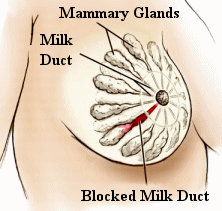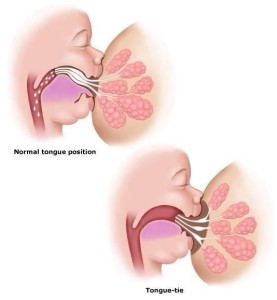Causes of nipple pain while breastfeeding and why it does not matter what someone thinks of the latch…
“The latch looks fine!
“Ooooohhhh wait, that doesn’t look right”
“He is not latched on right” the child health nurse said. I immediately panicked! I thought breastfeeding was going so well! He was peeing, pooping, growing and seemed pretty content. I had no nipple damage or pain…yet with that one little sentence I panicked. I was always such a strong, aggressive woman. I was not afraid to say what I felt and was confident in my decisions. Yet put a new baby in the mix and I fell apart. I was twenty two and had only been a mum for a few weeks. I didn’t know how to articulate what I wanted to say…”Actually, the latch is perfect. How about you ask me how it feels and if I’m concerned instead of stating it’s not right.” But I didn’t say those words. I didn’t even think those words. For the next 24 hours I fretted and fussed over his latch. Taking him off and re-latching a few times each feed until I felt as though it looked right. Thankfully my husband finally said to me, “Meg don’t worry about it! He is obviously latched on fine.” Once I heard those words I never thought about it again.
There is a problem with looking at “the latch”. Simply put, it doesn’t mean a thing. Anyone can look at your baby breastfeeding and say, “That latch looks good!” or “There is a problem with the way your baby is latching.” Why do these observations not mean anything? Because it doesn’t matter what it looks like to someone else. As the mother, you know if the latch is working or not. It does not matter if you are a first time mother or have ten kids, you know your nipple is not supposed to feel like it’s about to fall off or burst into flames. You don’t need someone telling you how the latch looks, you need someone asking you what you feel as your baby is breastfeeding.
As an International Board Certified Lactation Consultant (IBCLC), there will be circumstances where it is important it is for me to observe a baby breastfeeding. I can get a better idea of how the baby is breastfeeding and if there are any obvious milk transfer issues going on or maybe a tongue, or lip tie. Watching a baby breastfeed can help me put all of the pieces together of the mother’s experiences and intuition along with her baby’s signs or symptoms. Sometimes how the baby is latching is an indication of what else can be going on. Does he have a shallow latch or maybe he keeps sliding off or clicking while he is breastfeeding? There are many things that I can assess when watching a mother feed her baby. However, in every case a woman knows if something just isn’t right. She knows if her baby is latched on well because if he is not, her body is going to tell her and her baby is going to tell her. She just needs someone to listen and to help fit together the final pieces of her breastfeeding puzzle. Time and time again I have had women tell me how they were told their latch “looked good” so they did not receive the help they needed. They were continually pushed away, told that it will “get better” and were not taken seriously because the latch appeared normal.
So what are causes of painful breastfeeding?

- Incorrect latch! YOU WILL KNOW! If someone is telling you, “The latch looks fine!” but you are hurting or it just doesn’t feel right…IGNORE THEM, find someone who listens to you, what you are feeling, and will help form a plan to get you to your breastfeeding goals and stop the pain.
- Thrush! Burning, tingling, painful nipples and sometimes shooting pain into your breasts. This will often happen after a prolonged period of pain free breastfeeding. Suddenly, “BAM!” it appears and it’s extremely painful.
- Dermatitis/eczema! This can be hard to diagnose as it’s sometimes mixed up with thrush. Make sure you are getting help from an experienced lactation consultant or a doctor who is well educated in breastfeeding.
- Hormonal changes! It is not uncommon for women who are about to menstruate or are pregnant to feel pain in their nipples when breastfeeding.

source: homeremediesweb
- Mastitis/plugged duct! Fire boob! Mastitis can be incredibly painful and the symptoms usually first appear as fever and flu like symptoms with a hard lump or a small painful area on the breast and sometimes areola.

- Tongue or lip tie! Tongue and lip ties are frequently mis-diagnosed, under-diagnosed or completely dis-regarded. Just because your baby has a tie it does not mean they will have difficulty breastfeeding. I have a very obvious tongue tie; heart shaped tongue, very tight frenulum, little movement, however my mother breastfed me for two years without ever having pain or issues breastfeeding. Then there are babies who have what people will describe as a “minor” tongue tie and the mother will have serious pain. There is no “minor” or “major” when it comes to ties. Just like pregnancy you either are…or you aren’t. It will either affect breastfeeding, or it won’t. Seek help from a IBCLC who has experience with ties and get a second opinion if you feel as though their assessment was incorrect.
- Raynaud’s Syndrome! This is when a woman will experience vasospasm in her nipple. Women will actually notice their nipples turning from white to blue or red. This will happen immediately after a breastfeed and is not helped with correcting the latch. It is related to temperature changes on the nipple after the feed and can be exacerbated when a woman has nipple damage.
- Milk bleb/blister! Milk blisters are little white blisters on the end of the nipple. It is actually a piece of skin with milk stuck underneath it. These can happen at any time while breastfeeding.
No matter what the cause of the pain though, there are solutions to every one of them! Try not to get discouraged as there are steps you can take to alleviate the pain and continue to breastfeed. This list is a very brief summary. Please CLICK HERE if you are in need of some help and would like to schedule a breastfeeding consultation with me. I am able to help with all of these breastfeeding challenges…and more.
Mothers of the world, you know if there is a problem. You know that breastfeeding is not supposed to hurt. You know when it’s not right. Give yourself some credit as a mother who knows her baby best and those who are helping need to give you some credit as well. Our job as breastfeeding specialists is not to swoop in and tell you what’s happening. Our job is to hear your story, observe your baby breastfeeding if you both feel it’s necessary, and to put all of the pieces together. Breastfeeding is not black and white. You know your baby best. Trust your instincts, follow the lead of your baby and seek help from someone who listens to you, asks you what your instincts are telling you and respects your knowledge and expertise. You know your body. Trust what it is telling you and remember that there are possible solutions to every breastfeeding challenge, including painful breastfeeding.









